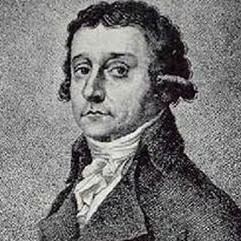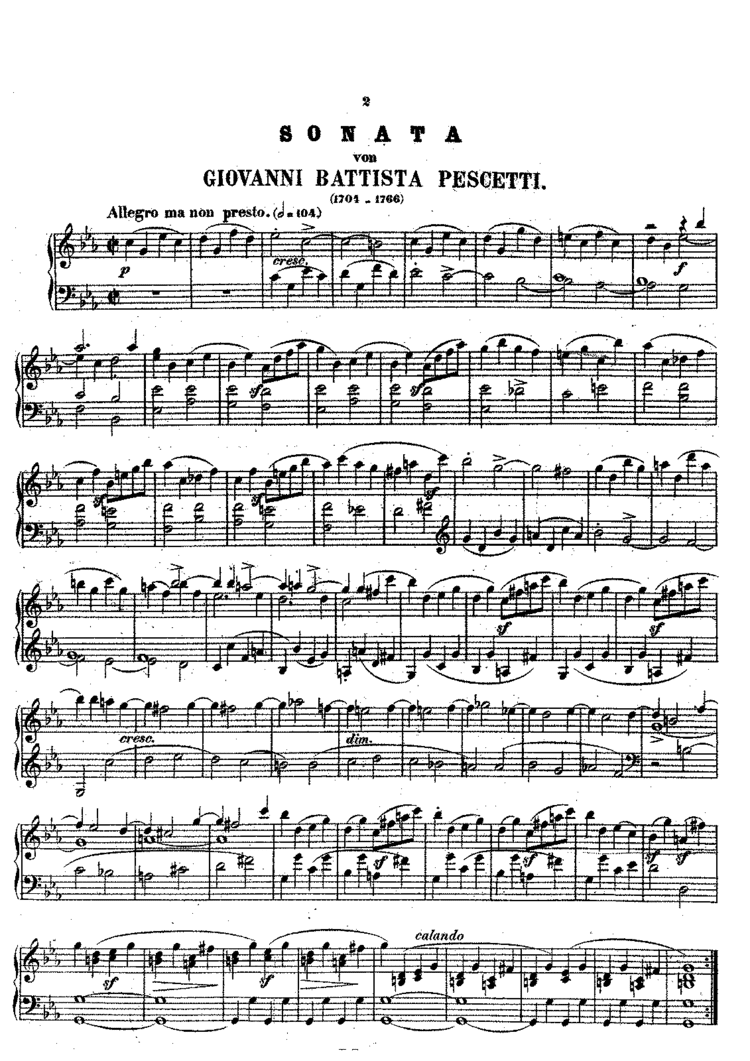Name Giovanni Pescetti Role Organist | Music director The Innocents | |
 | ||
People also search for Baldassare Galuppi, Johann Christian Bach, Gian Francesco de Majo, Mattia Vento, Isidro B. Maiztegui | ||
Giovanni Battista Pescetti - Harpsichord Sonata in C minor
Giovanni Battista Pescetti (c. 1704 – 20 March 1766) was an organist and composer. Born in Venice around 1704, he studied under Antonio Lotti for some time. Having spent some time writing operas in and around Venice, he left for London in 1736, becoming director of the Opera of the Nobility in 1737.
Contents
- Giovanni Battista Pescetti Harpsichord Sonata in C minor
- Presto giovanni battista pescetti
- Sonata in C minor
- Media
- References

After having to leave London when hostility arose against Catholic Italians, he returned to Venice in 1745 and became Second Organist at St Mark's Basilica. He died in Venice.

Pescetti was active as a teacher of composition in Venice; his most famous students being Josef Mysliveček (1737-1781) and Antonio Salieri (1750-1825). Although his output consists mainly of operatic works, a considerable amount of Pescetti's compositions were written for harpsichord, some intended to be performed on pipe organ, including his Six Sonatas, composed around 1756. Today, his keyboard sonatas are generally performed on a modern piano, though various recordings exist that use the intended organ.

Presto giovanni battista pescetti
Sonata in C minor

The popular Sonata in C minor was transcribed for harp by Carlos Salzedo. The first movement is in two four and opens with eighth notes outlining the tonic triad—C, down a fourth to G, up a sixth to E Flat and back down a third to C. This is echoed in the left hand as the right hand plays quarter notes E flat, C, B natural. The right hand now plays the melody again and continues on, transposing to G major, going through a short development and then ending in G. The melody repeats, then goes to a second section starting in E flat major. This section follows the same structure—melody in right hand, melody in left hand, melody in right hand, transposes back to c minor, goes through the same development and then ends in c minor. The second section repeats again and the movement ends.

The second movement in characterized by a quarter note melody embellished by grace notes with a triplet left hand accompaniment.

The third movement (presto) begins with the three notes of the C minor triad in a C-G-C-E flat pattern. This upwards moving passage then moves down from E flat to C then repeats the opening pattern with different notes, D-G-D-F and then descends from F to D and then returns to E flat. In order to complete this opening passage there is a downwards scale from E- flat to C and then leave the opening in a state of resolution, there is a final four note pattern, B natural-C-D and finally to G, the dominant. This is then repeated an octave lower. Throughout this, the left hand is playing short, staccato accompanying quarter notes whereas the right, which was discussed above, is playing eighth note tuplet. After the opening passage is complete, there is the a series of broken C major chords one octave above from where the opening passage ended. Each of these broken chords are repeated twice, modulating from C major to F minor to B flat major and finally, to E flat major. Once reaching E flat major, the relative major of C minor, there is a downwards scale continuing until reaching G, an octave lower. From this point, a new pattern emerges, consisting of the three notes: F, G, A flat and B flat. The notes are arranged in a G-A flat-B flat F-G-A flat pattern, which is repeated twice. After this pattern, a broken E flat major tonic chord is played, followed by another downwards scale once again beginning on C and continuing to a low F. Following the scale is a final closing pattern, one which is not heard in again in the piece. The closing bar ends with a broken E flat major chord beginning on G followed by the three notes C - A flat - G and closes in a E flat major cadence. (End of first part.)
Media
Listen to an Allegretto in C major for harpsichord.
Listen to the Allegro ma non presto, first movement from Sonata in C minor for harpsichord.
